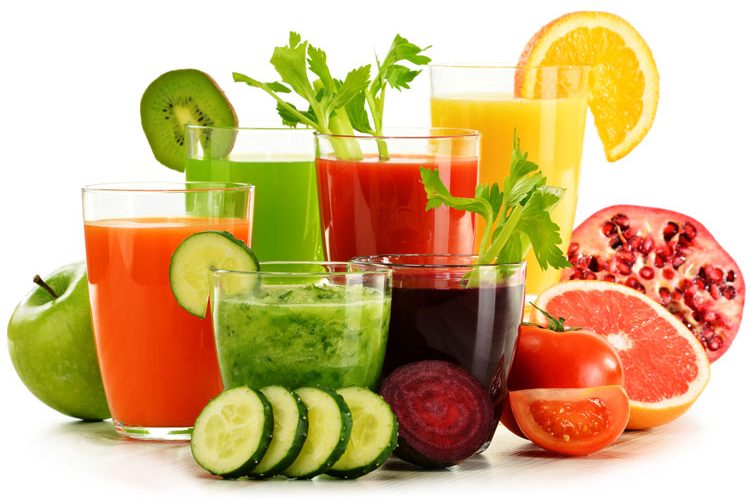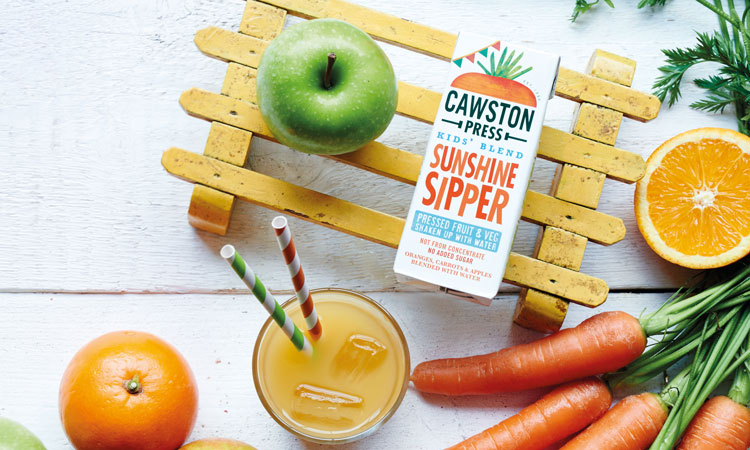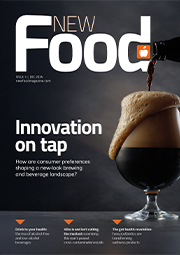Choose a healthy juice
- Like
- Digg
- Del
- Tumblr
- VKontakte
- Buffer
- Love This
- Odnoklassniki
- Meneame
- Blogger
- Amazon
- Yahoo Mail
- Gmail
- AOL
- Newsvine
- HackerNews
- Evernote
- MySpace
- Mail.ru
- Viadeo
- Line
- Comments
- Yummly
- SMS
- Viber
- Telegram
- Subscribe
- Skype
- Facebook Messenger
- Kakao
- LiveJournal
- Yammer
- Edgar
- Fintel
- Mix
- Instapaper
- Copy Link
Posted: 19 August 2017 | Samantha Edgar - Tetra Pak | No comments yet
In the UK 60% of consumers say they are actively looking for healthier options when grocery shopping, meaning that delivering healthier nutrition for children is key. In this article Samantha Edgar, Communications North West Europe, Tetra Pak, asks how can the juice industry support parents with children’s healthy nutrition?


Children in the UK are struggling to achieve a healthy balanced diet. The Scottish Health Survey in 2014 highlighted that only 14% of 2-15 year-olds eat five portions of fruit and vegetables a day, and research conducted by Public Health England in the same year identified that only 10% of boys and 7% of girls between 11-18 years met the ‘5-a-day’ recommendation.
The juice industry has a key role to play in helping parents to improve on this. Just 150ml of fruit juices or smoothies can provide an easy way for children to receive one of their ‘5 a day’ and in choosing the right packaging, producers can ensure that this is delivered to kids and parents in the most convenient way possible; in the right portion.
While some producers look to reduce the amount of sugars naturally found in juice, greater nutritional and hydration value can be delivered to kids through product innovation. By combining juice with other ingredients such as vegetables, water, dairy, added vitamins and minerals etc., parents can deliver the best of both worlds.
There is no doubt that in the right amounts, juice and juice based drinks can also provide a more nutritious alternative to less healthy drinks; an important fact when you consider that 67% of people feel that sports and energy drinks are not suitable for consumption for under 16s.
For this reason, drinks makers must ensure that perceptions of juice as a healthy drink remain high and exempt from any future regulation. To achieve this they need to not only work to highlight the health benefits of juice, but innovate and ensure that juice continues to add nutritional value to children in the most convenient way possible for parents.
What concerns do parents have?
As the debate on childhood obesity, healthy nutrition and food and drink continues, concerns over obesity levels and sugar consumption undoubtedly influence consumer behaviour and purchasing decisions. For parents, it may create difficulty with identifying and choosing healthy drink options for their children.
This is apparent in school lunchboxes. Our recent research has shown that more than half (57%) of parents try to choose healthy items for their child’s lunchbox but often realise that the products they are choosing are not as healthy as they appeared to be. In fact, 20% of parents say that making it healthy is the most challenging aspect of preparing their child’s lunchbox, and over a third (36%) even claim they feel guilty for providing their child with a lunch that they do not consider to be healthy enough.
The message here is clear: parents want to make healthier food and drink choices for their children but do not always recognise healthy products, or find it difficult to balance healthy foods with food and drinks they know their child will consume. Parents need more support and guidance on making these healthy choices. The juice industry and retailers have an opportunity to recognise this demand and provide the right products to meet this need, alongside easily-accessible information to help parents make the right decisions.
What healthy steps is the juice industry taking?
One of the main steps that the juice industry is taking to address the desire for healthier drinks is reformulation, with exciting new mixed blends added to the market all the time.
Cawston Press, for example, noticed that consumers’ tastes were changing and that, consequently, people were drinking more plain water, flavoured waters, and generally moving away from overly sweet products; not just in drinks but across the board. The Cawston team decided to develop a range of kids’ drinks made from a blend of 60 per cent pure juice and 40 per cent water. In addition to being a product they thought children would like, they felt it would be suitable for kids who might not have tasted juice before, creating an ideal opportunity to train their palates to like less sweet things.
Cawston’s instincts proved well founded: the Kids’ Blends range has been very successful since it was launched in 2012. The team recently launched a new variant, ‘Sunshine Sipper’, a blend of fruit and vegetable juices (orange, apple, and carrot), water, and vitamin C and are also looking at expanding into new markets, such as the US.


The range of products that can be blended with juice is extensive; including milk, water, vegetables, electrolytes, vitamins, minerals and more. By blending 150ml of 100% fruit juice with these other ingredients, producers can ensure that the recommended 150ml portion can be delivered in larger portion sizes to act as an additional source of nutrition and hydration.
Many brands are now expanding their reduced sugar offering and highlighting low sugar content prominently on the pack to avoid confusion.
Another tool in supporting healthier nutrition for kids beyond reformulation, is packaging juice in smaller portion sizes – convenient for both lunchboxes and for ensuring children drink the recommended 150ml. Tropicana’s new Little Bottles, packaged in 150ml Tetra Top cartons, offer multipacks of six cartons. They are ideal for lunchboxes and the single serve portion helps parents to ensure their children consume the right amount of juice each day. Running alongside this product, Tropicana’s free little glass campaign, which offers consumers a free glass with every three packs, is also helping to educate parents around more suitable portion sizes for juice.
Radnor Hills have also launched a range of 125ml juices packed in aseptic cartons for schools and lunchboxes.
Communication is key, and in a time-strapped society, drinks producers are working to ensure they communicate the benefits of juice and recommended portion sizes via simple and clear messaging. They must, however, still consider the manner in which these messages are being delivered. Increasingly, consumers are moving toward buying their groceries online and so thinking about how best to use technology to appeal to a wider audience will be beneficial in the future. Leveraging the right digital and mobile channels is now hugely important for grabbing the attention of busy shoppers, whilst also supporting healthier choices.
How does this benefit parents?
Parents need to be able to purchase products that they know are healthy, and that are convenient in all sorts of situations – whether that is in lunchboxes, at breakfast clubs or after-school clubs, or at home during the weekend. A move towards smaller portion sizes, low-sugar blends, and clear on-package branding can help manufacturers meet this need in the months and years to come. Equally, as more than half of children take a lunchbox to school, retailers should consider a single destination ‘lunchbox aisle’ to help parents quickly access a variety of healthy foods and drinks in small sizes suitable for this purpose. And with adult lunchboxes also taking the nation by storm, this will help retailers to capitalise on the child and adult lunchbox occasion. Doing so will ensure that juice continues to be acknowledged as a healthy, convenient way for children to get one of their five-a-day, and the industry can continue to innovate to meet consumer demand.
Biography
Samantha Edgar is responsible for Communications North West Europe at Tetra Pak, a role she has fulfilled for over three years. She has been with Tetra Pak in a variety of roles since 2003, working as Environment Officer, External Communications Officer and Communications Manager amongst much more. She studied at Bour
The rest of this content is restricted - login or subscribe free to access


Why subscribe? Join our growing community of thousands of industry professionals and gain access to:
- bi-monthly issues in print and/or digital format
- case studies, whitepapers, webinars and industry-leading content
- breaking news and features
- our extensive online archive of thousands of articles and years of past issues
- ...And it's all free!
Click here to Subscribe today Login here









